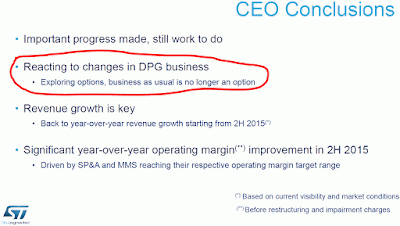Adimec announces its participation in two European projects for advancing CMOS image sensor technology: CISTERN and EXIST. Both programs begin in April/May 2015 and will be completed in 2018.
The main objective of CISTERN, which is an acronym for CMOS Image Sensor Technologies’ Readiness for Next generation of applications. The other partners in this project are Grass Valley (project leader), Thales Angenieux, SoftKinetic, Delft University of Technology, University of Burgundy. CISTERN is a part of CATRENE Program and is aimed to:
The main objective of CISTERN, which is an acronym for CMOS Image Sensor Technologies’ Readiness for Next generation of applications. The other partners in this project are Grass Valley (project leader), Thales Angenieux, SoftKinetic, Delft University of Technology, University of Burgundy. CISTERN is a part of CATRENE Program and is aimed to:
- To develop CMOS imager sensors with improved performance on spatial resolution, temporal resolution, higher bit depths, lower noise, wider color gamut, higher quantum efficiency (not necessarily all combined for each sensor) and additional, smart functionality in the pixels. The consortium will develop imager sensors in the categories UHDTV, Time-of-Flight and hyper- and multi-spectral, for the application areas broadcast, entertainment, and security.
- To develop real time image processing techniques needed to improve the quality of the digital output signal of the sensor demonstrators.
- To develop and demonstrate the capability to produce multispectral imagers by hybridization of multispectral filter arrays on top of CMOS sensor.
- To demonstrate the improved performance of the CMOS imagers combined with related processing in a number of demonstrators.
- To develop Ultra High resolution, widely opened, sensor adapted zoom lenses (2/3’’ format, 4K resolution) for broadcast and security applications/markets.
- To optimize lens design in term of performance/cost/weight/camera integration for integral imaging chains.
- To develop and demonstrate an integrated Camera Lens Assembly for security applications that offers UHDTV performance with Size and Weight of an HDTV solution.
- To start in-house CMOS image sensor development in Grass Valley.
- New design (architectures) and process technology (e.g. 3D stacking) for better pixels (lower noise, higher dynamic range, higher quantum efficiency, new functionality in the pixel) and more pixels at higher speed (higher spatial and temporal resolutions, higher bit depth), time-of-flight pixels, local (on-chip) processing
- Extended sensitivity and functionality of the pixels: extension into infrared, filters for hyperspectral and multispectral imaging, better colour filters for a wider colour gamut, and FabryPérot Interference cells
- Increasing the optical, analog and data imaging pipelines to enable high frame rates, better memory management, etc.
- two high resolution, high frame rate image sensors with 32Mpixels or more;
- two Time of Flight image sensors;
- one 3D stacked image sensor.
- one integrated high performance hyperspectral image sensor
- Multispectral filters for MWIR
- Hyperspectral filters for NIR-passband and NIR-cutoff filters;
- HSI filters and BSI imager for VISNIR range;























